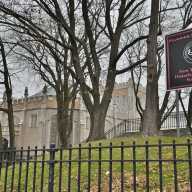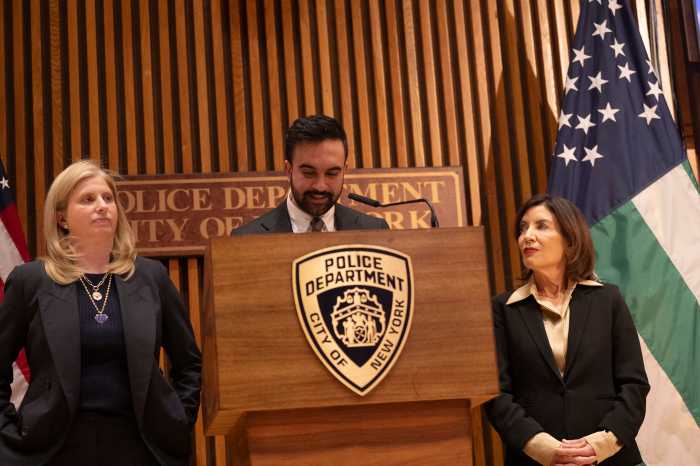The fundraising drive for the relocation of St. Saviour’s Church in Maspeth received a large monetary boost recently.
Queens Borough President Helen Marshall has offered $100,000, a spokesperson from her office confirmed, matching a previously donated amount from State Senator Serphin Maltese.
“The church will be restored to its original Richard Upjohn design. This is money well spent to preserve a structure that is more than 150 years old,” Marshall said. “I was delighted to work with the Juniper Park Civic Association (JPCA), the Landmarks Conservancy and the Newtown Historical Society to help make this happen.”
The new funds will cover the entire amount needed to dismantle and move the church, said JPCA officials.
In addition, the New York Landmarks Conservancy is paying for the assessments, drawings and preliminary restoration services of the 160-year-old church, now located on Rust Street between 58th Street and 57th Road.
However, more money will be needed to put the church back together at its new home within nearby All Faiths Lutheran Cemetery in Middle Village.
“Reassembling it is the big part. That’s going to take some money,” said Bob Holden, President of the Juniper Park Civic Association, which has battled to save St. Saviour’s for more than two years. “We are hoping we are going to get funding from elected officials and private donors.”
Holden guessed that the reassembly would take several years and said that he, fellow preservationist Christina Wilkinson, who chairs JPCA’s Save St. Saviour’s Committee, and others would have preferred that church had been able to remain in its current Maspeth location.
“It should stay where it is. That’s why I’m not overjoyed that we are moving it,” Holden said.
The JPCA was allowed 30 days to move the church, starting from Monday, March 31, but the property owner told civic activists that Maspeth Development LDC would not tear down the building, so long as the group had made progress relocating it. The civic retained the demolition company, which had been hired to tear down the church, to dismantle and move the house of worship instead.
“Everybody who walks in, the architect, the demolition company, they are all saying it’s a beautiful building,” Holden said. “But it’s a simple construction and that’s the beauty of it.”
English-born architect Richard Upjohn had drawn up plans for Trinity Church in Manhattan, using a Gothic Revival style and many elaborate details, before creating the design for St. Saviour’s, which Holden said had been a model to be reproduced nationwide.
“It is a church that could be built for rural America,” Holden said, explaining that at the time of St. Saviour’s construction in 1847, the area had been much more bucolic.































